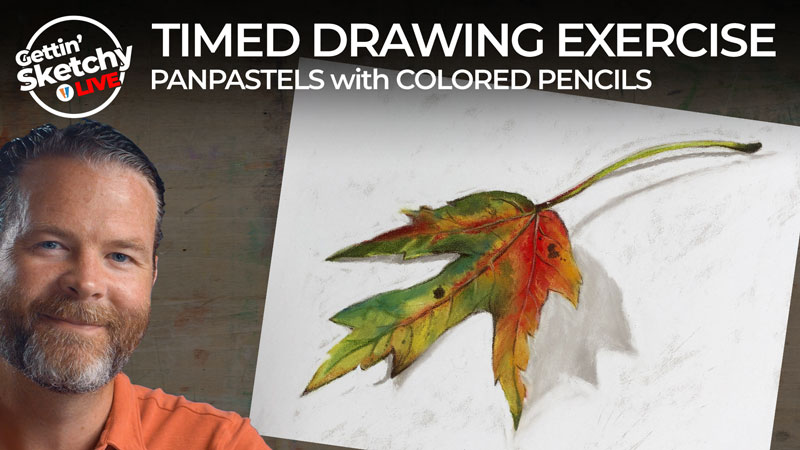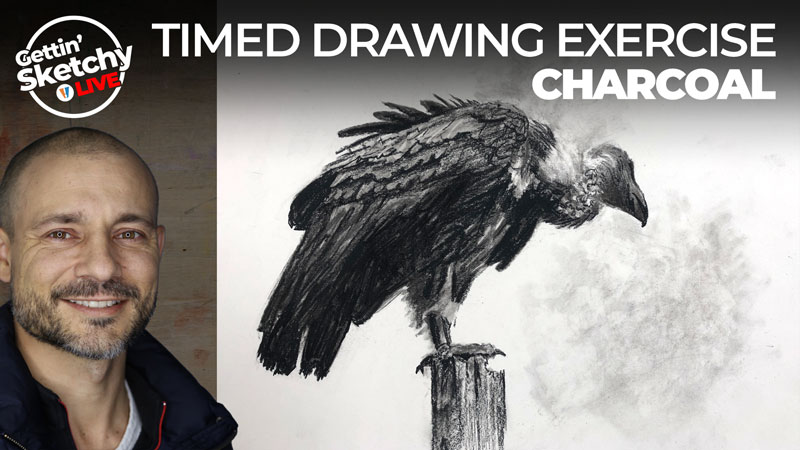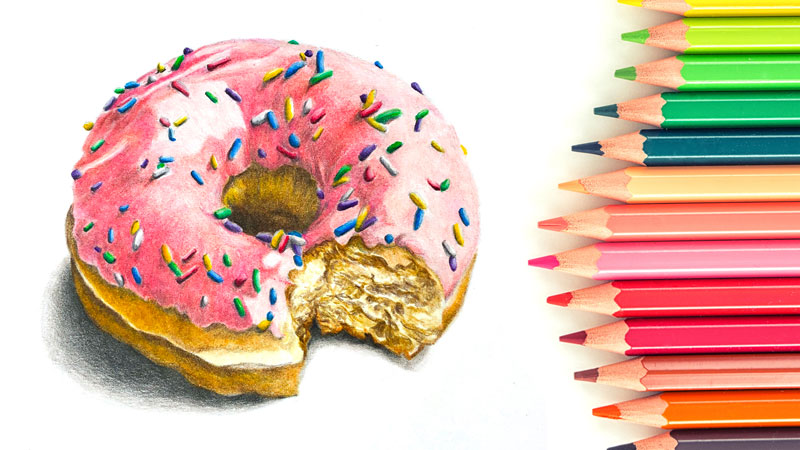Gettin’ Sketchy – Draw a Bug with Colored Pencils on Black Paper – Season 3 Episode 4
This episode aired live on YouTube on February 10, 2021.
In this timed drawing exercise, we take a look at creating a colored pencil drawing of a bug with a limited palette of colors on black paper. This drawing was created in just under 45 minutes.
Limiting Colors
The colors of our world are beautiful, but they can be overwhelming when we try capture every color in a drawing or painting. Colors are complex.
It’s ironic, but limiting the colors that we use in a drawing often leads to better results. Then reason for this is two-fold.
Firstly, limiting our colors automatically creates harmony in a work. Using fewer colors actual ties the composition together.
See also: Composition in Art
Secondly, when we limit our palette of colors, it’s easier to concentrate on the values. Value, an element of art, is the darkness or lightness of color. When it comes to creating representational drawings and paintings, it is the most important element of art. Value tells us about the form of the object, the textures, and the light within the scene.
When we’re not distracted by all of the colors, we can focus on the darkness or lightness of the color that we are developing. Color doesn’t communicate the subject – value does.
In this drawing, Ashley has limited the colors and the result supports the above arguments. The work is completed on black paper, but only yellow and white are used. Here’s a look at the finished drawing…
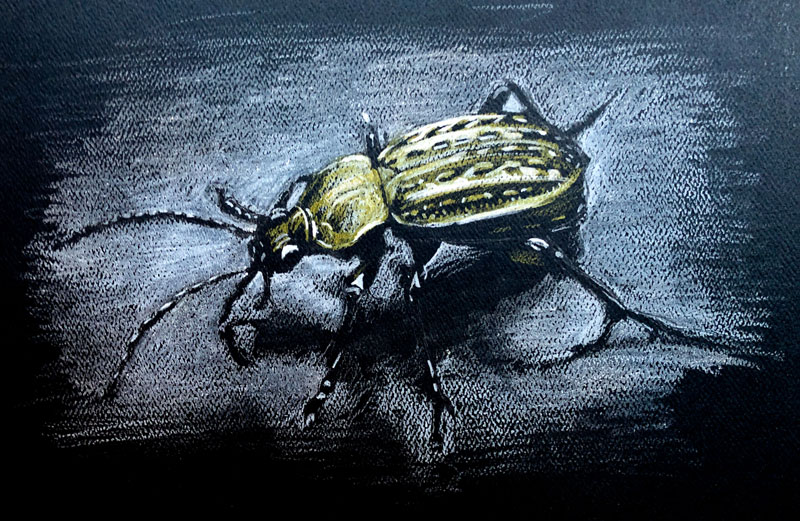
When we look closely at the finished drawing, we perceive that there are more colors there than just yellow and white. This is due to the accuracy of the values and the way in which the colors interact with each other.
The color of the paper is also affecting the perceived colors. Some areas even look a bit green. This is the result of the coolness of the black paper optically mixing with the yellow applications.
See also: Optical Color Mixing
The Black Paper Effect
Most of us are accustomed to working with a dark drawing medium on a white or light drawing surface. When we develop a drawing like this, we are focused on adding darker values, while relying on the white of the paper to influence the lighter values.
When we work on black paper, the way we approach values is reversed. Instead of relying on the color of the paper to develop light values, we use the paper to develop dark values. This means that we also add the lighter values with a light colored medium. In this case, Ashley uses the yellow and the white colored pencils for the lighter values and relies on the black paper for the shadows and darker tones.
See also: Drawing on Black Paper with White Media
For some, this shift in thinking and mark-making can be difficult. However, once you understand this concept and start making marks, it can be quite liberating. Most of us have more difficulty making a drawing as dark as it should be. But, when we work on black paper, it’s much easier to create the required range of value that we need.
See also: Papers for Drawing
The paper that Ashley works on in this drawing is also heavily textured. This heavier texture adds a bit of interest to the colored pencil applications and marries nicely with the looser drawing.
Photo Reference
The photo reference for this drawing exercise comes from Pixabay.com. When we examine the reference, we see that it is perfect for this media and surface combination. Here’s a look at the reference..
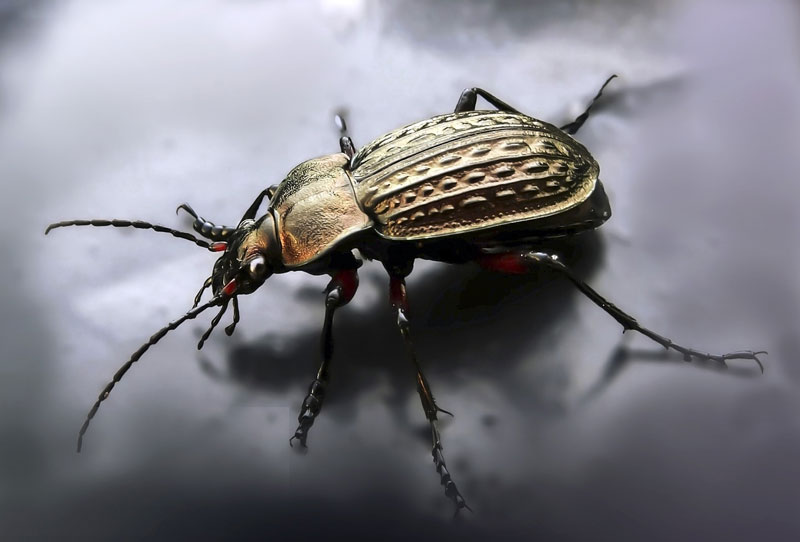
Drawing a Bug with Colored Pencils on Black Paper – Conclusion
This exercise is a reminder that we don’t have to have an extensive set of materials in order to create a successful drawing. We surely don’t need to include all of the colors that we see. Remember, value is the key. Even though this drawing is a quick sketch, it’s still quite refined. With just two colored pencils, the subject has been communicated accurately and also artistically.
If so, join over 36,000 others that receive our newsletter with new drawing and painting lessons. Plus, check out three of our course videos and ebooks for free.



